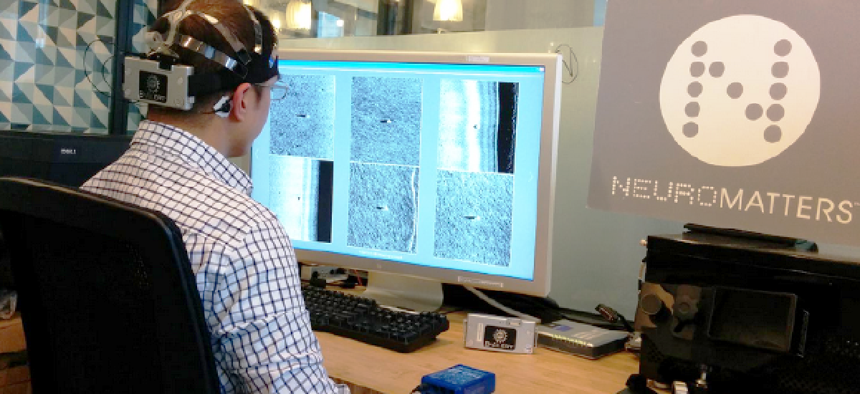The cyborg approach to spotting mines at sea


Connecting state and local government leaders
Researchers tested a new system that combines computer algorithms with a brain-computer interface to help humans more quickly identify underwater mines.
Researchers have built a brain-computer interface designed to speed identification of mines in sonar images of the ocean floor.
Computer scientists from the University of California, San Diego, worked with the Navy's Space and Naval Warfare Systems Center Pacific and collected 450 sonar images containing 150 inert, bright-orange mines in a test zone. Working with a dataset of 975 images of mine-like objects, researchers trained the algorithm to flag images that most likely included mines.
The algorithms are what's known as a series of classifiers, working in succession to improve speed and accuracy, UC San Diego explained. The classifiers capture changes in pixel intensity between neighboring regions of an image. The system's goal is to detect 99.5 percent of true positives and generate 50 percent fewer false positives during each pass through a classifier.
Researchers then showed the algorithm-filtered results to subjects outfitted with an electroencephalogram, programmed to detect brain activity triggered by mine-like images. Each image was shown to the subject for only 0.2 seconds -- just enough for the EEG-related algorithms to determine whether subject’s brain signals showed that they saw anything of interest.
Subjects were able to detect mines more quickly after images had been processed by computer algorithms that flagged mine-like images than they were at picking out mines from all the pictures collected. Surprisingly, some subjects performed better than the algorithms on their own.
The combination of computer and human analysis could open more doors for the Defense Department in future missions. "Computers are very good at finding subtle, but mathematically precise patterns, while people have the ability to reason about things in a more holistic manner, to see the big picture. We show here that there is great potential to combine these approaches to improve performance," said Ryan Kastner, professor of computer science at UC San Diego.
The Navy has used a variety of methods and apparatuses for mine detection, including sonar, lasers and even dolphins. There has lately been more interest in using unmanned underwater vehicles to search for mines.
However, the new man-machine partnership developed by UC San Diego could be the future. "Human perception can do things that we can't come close to doing with computer vision," said Navy Space and Naval Warfare Systems Center Pacific official Chris Barngrover. "But computer vision doesn't get tired or stressed. So it seemed natural for us to combine the two.”




